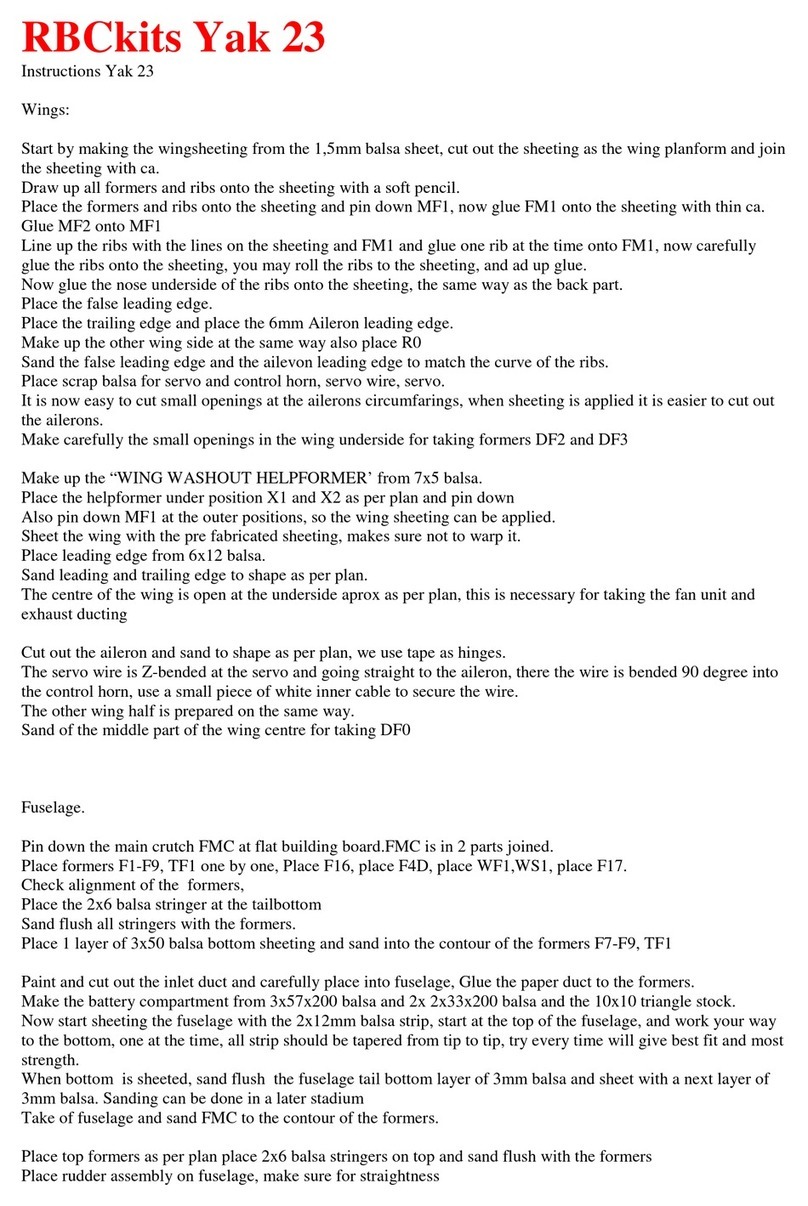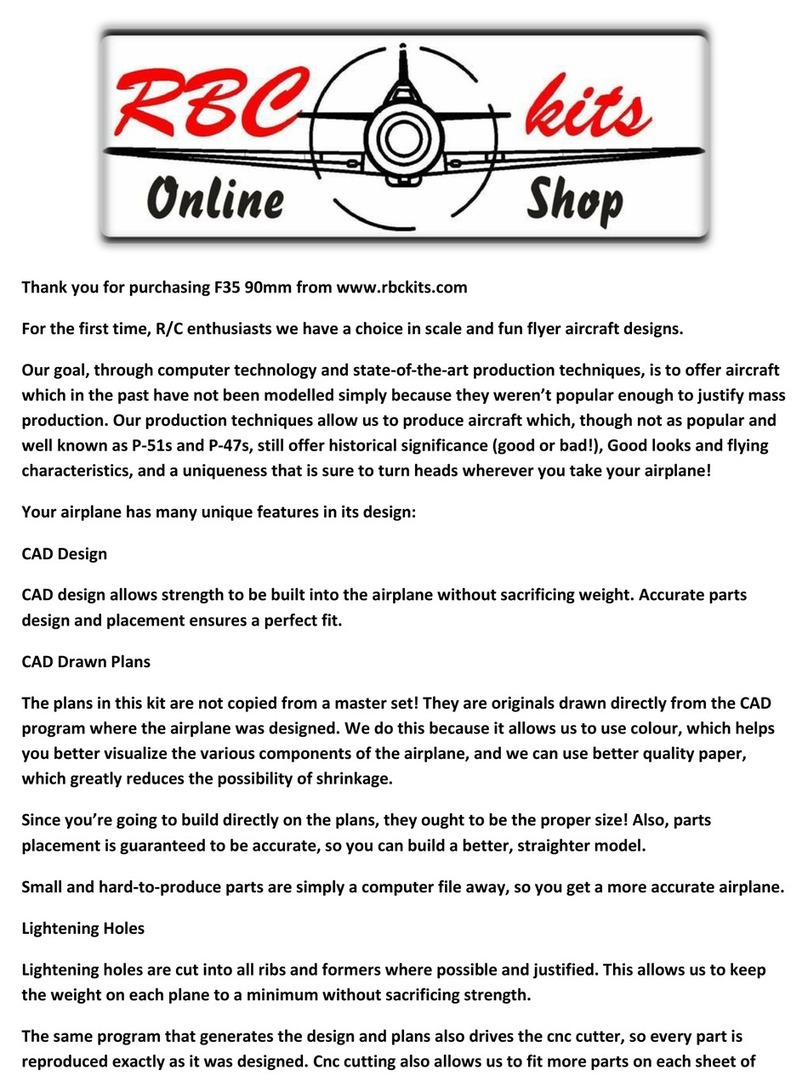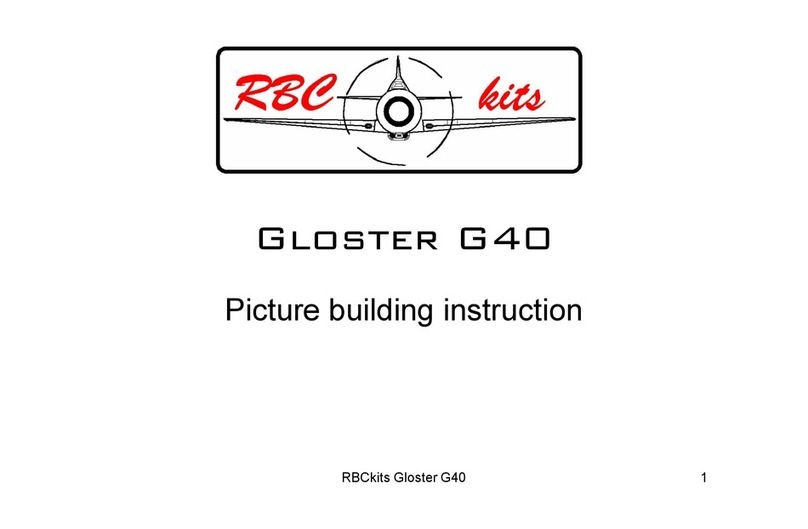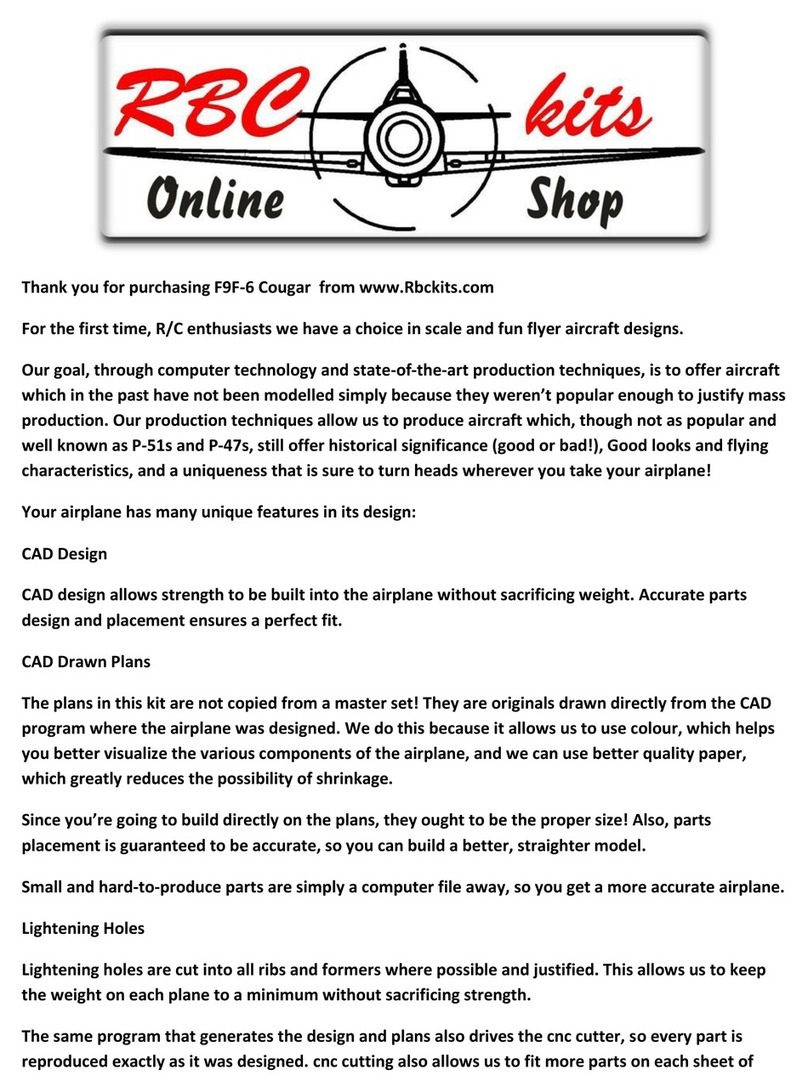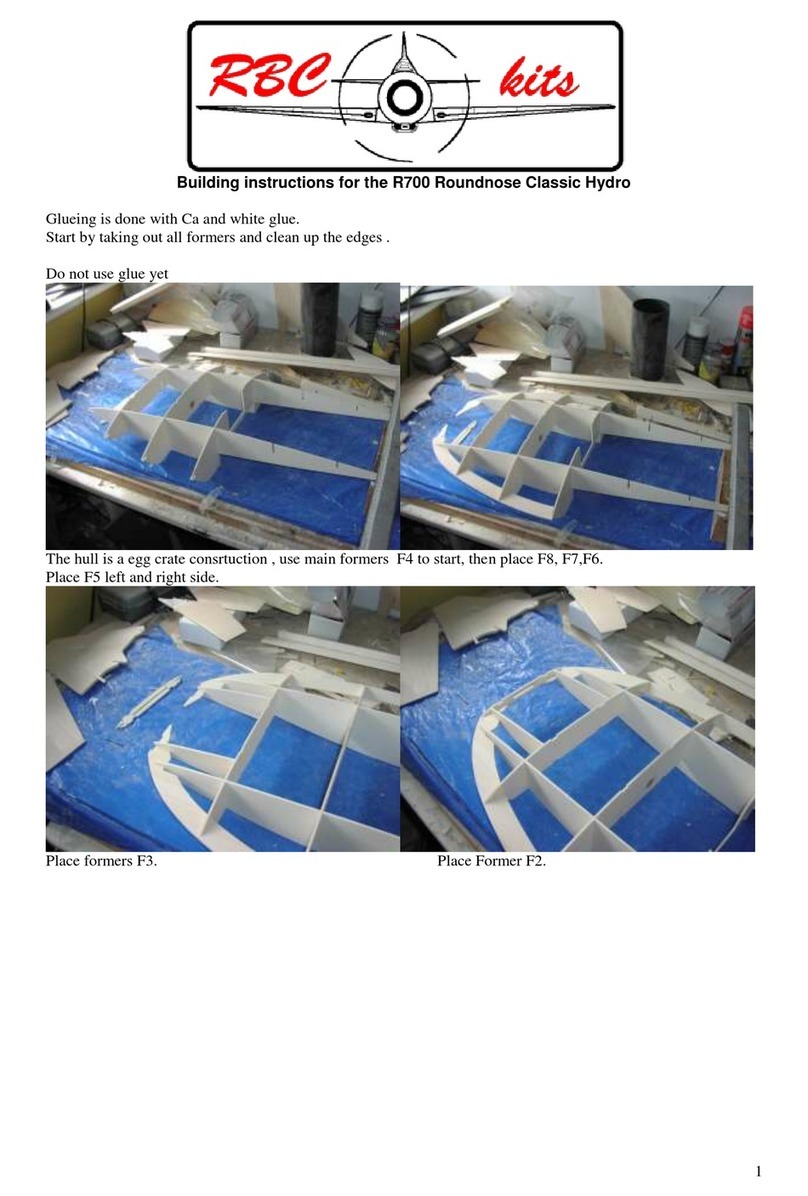
wood, reducing the waste, and lowering the cost to you.
Plastics
Several parts are accurately reproduced high quality Polystyrene, the canopy is made from PETG or
Lexan
General Building Information
The DH108 Swallow 90MM can be built by a person with experienced building skills. It is not designed
for someone who has built a trainer or low wing sport plane. No unusual building techniques are
required, although more difficult areas are explained in detail where necessary. Certain steps in the
building process must be followed as depicted, or you might find yourself digging back into the
structure to redo something. These areas are outlined when necessary. Occasionally hints will be
included at certain building steps. These are not required for completion, rather they are tips intended
to ease a particular process. The cnc router does cut through the wood, as a result of this, occasionally
there will be fraying on the surface of the wood. This is normal, and is only a surface problem and does
not affect the wood in any other way. Similarly, the cnc settings are optimized for wood thickness
averages, so occasionally, due to variations even in individual sheets, some areas might not cut
through completely. Simply use care in cutting the parts from the sheets; most of the time, the parts
will break out of the sheets!
Note that due the differences in wood thickness per sheet it is advisable to sand the tabs a bit so they
slide in easy , also sand the openings so parts slide in easy , hard pushing parts have a high risk of
breaking
Hardware and an edf unit are not included in the kit. There are so many choices for quality hardware
that these choices are left to the individual preferences of the builder, rather than include something
in the kit that you’ll probably throw away anyway.
This aircraft is not a toy. It must be flown in a responsible manner according to the rules set forth by
Law. The builder assumes the responsibility for the proper assembly and operation of this product.
Rbckits shall have no liability whatsoever, implied or expressed, arising out of the intentional or
unintentional neglect, misuse, abuse, or abnormal usage of this product. Rbckits shall have no liability
whatsoever arising from the improper or wrongful assembly of the product nor shall it have any
liability due to the improper or wrongful use of the assembled product. Rbckits shall have no liability
for any and all additions, alterations, and modifications of this product.
Having said that, turn the page and start building the best airplane kits on the market!
Material you might need:
Balsa knife, Stanley knife, straightedge, building board 1500mm,
ca glue medium, thin, thick you need approx. for wing and vertical stabilizer sheeting 4
bottles thick and 2 bottles medium for rib gluing,, fuselage 1 medium for formers … thick for
sheeting building nails, tape



